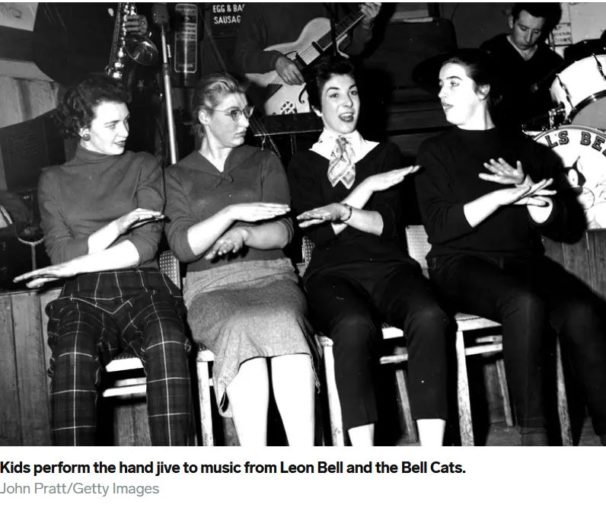
Ed. note: We’re pleased to feature a fun item contributed by an expert in American popular dance, Julie Malnig. Take it away, Julie!
The Hand Jive was one of the most popular rock and roll group dances of the late 1950s and became a hit on televised teen dance programs of the era such as American Bandstand and The Buddy Deane Show. The accompanying song, “Willie and the Hand Jive,” was composed in 1958 by the brilliant bandleader, singer, musician, and impresario Johnny Otis.
In the first video clip, from Otis’s own television program The Johnny Otis Show, he is at the piano playing and singing his signature number as the vocal trio Marie Adams and the Three Tons of Joy skillfully demonstrate how to perform this percussive hand dance. The routine performed by the musical trio — that involved clapping hands, hitting the thighs, and beating the wrists — is similar to the gestures one would have seen white and black teenagers enacting either on television or in local schools and social clubs of the day.
The second video clip of the 1959 film Juke Box Rhythm, features Otis, again, and a jazzy, highly theatricalized (and somewhat corny) version of the Hand Jive featuring well-known swing dancers of the period Gil and Nikki Brady (he’s wearing the thick-rimmed glasses). The film’s director, the German-born musical prodigy Arthur Dreifuss, began as a Hollywood dance director in the 1930s but ultimately made his reputation as a producer and director of low-budget musicals. The choreographer, Harold Belfers, started out as a tap dancer and then went on to direct, produce, and choreograph over two hundred films and TV variety-show productions. The Hand Jive is probably best remembered from the 1971 Broadway musical Grease and its 1978 film adaptation choreographed by Patricia Birch.
Julie Malnig is a professor of dance studies at New York University. She is completing a book on televised teen dance programs of the 1950s and 1960s.
